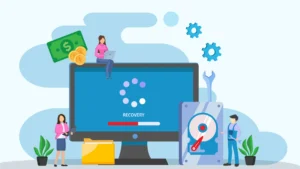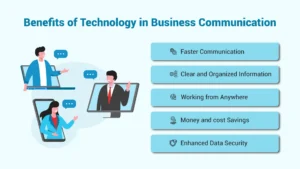In today’s digital world, “What is bandwidth?” is a question that goes beyond just internet speeds. While traditionally, bandwidth refers to the capacity of a network to transmit data, it has also evolved into a term used to describe how much mental or physical capacity someone has to manage tasks or challenges.
In business, understanding bandwidth is crucial for ensuring smooth operations, as it dictates how much data can be transmitted at once, directly affecting performance. Many people confuse bandwidth with speed, but they are not the same.
In this post, we’ll break down the basics of bandwidth, its difference from speed, and how factors like VPN usage, the number of users, and device capabilities can affect its performance in both personal and business settings.
What is Bandwidth? Understanding the Basics
In conversation the other day, a parent said, “I just don’t have the bandwidth for this teen drama today.” My nerdy mind immediately thought about 1’s and 0’s passing through space. Bandwidth is now a buzzword, according to the Urban Dictionary, for how well someone is able to complete a task or a measurement of mental agility.

However, in my world, bandwidth is about the Internet and how effectively my business can operate. By definition, bandwidth is a range of frequencies within a given band, which is used for transmitting a signal. Speed and bandwidth are often confused or used interchangeably. They are not the same.
Bandwidth vs Speed: What’s the Difference?
Let’s think of speed and bandwidth like a straw in your favorite milkshake. You can drink your milkshake with quick pulls on the straw or slower pulls; this affects the speed that you enjoy your milkshake. But have you ever gotten a thick, yummy milkshake, but the straw was so small that you had to stir your milkshake around and let it melt before you could get any milkshake via the straw? Ugh! So frustrating!
So, speed is how quickly the yumminess can move through the straw, but the bandwidth refers to the quantity of the yumminess that moves through the straw during a set time.
How Bandwidth Works in a Business Environment
The bandwidth for your business can be thought of like the electricity coming into your office building. The refrigerator or furnace in the building will always pull a little bit of electricity, so there’s always a little bit of ‘bandwidth’ flowing through the office. But when you and your staff come in on Monday morning, they turn on the lights and their computers.
You might have a stereo that you turn on, or “Sally in Accounting” turns on her personal heater under her desk. Each of these items that get turned on will draw electricity and thus divide the “bandwidth.” Normally the electricity coming into the building allows all of this to happen without you seeing any effect of making your mid-afternoon popcorn snack in the microwave.
Now, your co-workers might complain when you burn it, but it won’t cause the radio to go off or their computer to suddenly reboot. But occasionally, the company’s chili cookout with 10 crockpots plugged in will cause you to “trip a breaker.” This is when the wiring can’t keep up with the pull of electricity needed. Another way to say this is, the range of frequencies within a given band can’t keep up. Sound familiar? Yep! That’s the definition of bandwidth.
Factors That Affect Bandwidth
Bandwidth is crucial for smooth internet usage, whether it’s for browsing, streaming, or business operations. Several factors can impact how much bandwidth you have access to and how efficiently it’s used. Understanding these factors can help you optimize your internet experience.
1. VPN Usage
Using a VPN enhances security (if you’re not using one, check out our blog) but can reduce both bandwidth and speed.

2. Employee Activities
Every employee adds to the bandwidth need, not only with the applications they need to work but also with streaming music while they work. These will divide your bandwidth and speed.
3. Home Office Challenges
If you work from home, add in game consoles, Netflix, and Zoom meetings. Suddenly the bandwidth “pie” is being cut into very thin slices.
External Sources Affecting Bandwidth
1. Location Matters
Your location can affect your available bandwidth. Remember how in previous blogs, we talk about the Internet being like our road systems. You get onto the Internet by backing out of your driveway into a street. Then that street merges onto a state highway, then moves to an Interstate. Each allows more lanes and a faster speed limit.
When you live out in the country, you might travel more on little two-lane roads; heck, I know areas here in Indiana that have one-lane bridges still. These areas have lower bandwidth and speed because the wiring delivering the service to the area is outdated or weaker.
2. Shared Internet Connections
Some ISPs bring in a big pipe for a neighborhood and then run lines to each of the houses (technical term “endpoints”) that need it. The entire neighborhood shares a single pipe; the problem with this is like a garden hose with a water sprinkler.
If you have a water hose with a water trigger, it can shoot water many feet up in the air and can cover a pretty big area. But if you put four to eight sprinklers on that same hose, you would notice a dramatic difference in how the water is coming out—it goes a shorter distance, and the pressure is smaller.
Have you ever been on the Internet, maybe working at home, and you hear a bus go past bringing the kids home, and suddenly your internet is crawling? Using my neighborhood as an example… suddenly 300 houses that were using mostly the minimum bandwidth all turn on. The kids are watching YouTube, turning on their game console, and maybe even doing homework! That is a shared Internet backbone.
3. Device Limitations
Physical devices can affect your available bandwidth. You have a modem, router, or wireless receiver of some type to allow you to access the Internet. Each of these devices is built with capability limits.
It’s like your favorite pants. When they are sewn together, they are made for a certain size. If your body gets smaller, the pants will still “work” (maybe add a belt so we don’t see your crack), but if your body gets bigger, those jeans can’t “grow” with you. They might work for a bit, but at some point, you’re risking the seam ripping out!
4. ISP Control
Your Internet Service Provider can also set maximum bandwidth. In some cases, you can just request this to be changed. The ISP will increase speed and bandwidth together; you can’t have one without the other. There is always a cost involved.

Final Thoughts
Bandwidth plays an important role in determining how effectively your Internet functions. Understanding the factors affecting it can help you optimize your connection and avoid frustrating slowdowns.
Author
-
Jay S. Allen, MCP, MCSA, MCSE, MCSE+ Security, is an experienced IT professional with more than 20 years in the industry. He specializes in delivering enterprise-level cybersecurity and IT support solutions tailored to small and mid-sized businesses. Through Techno Advantage, Jay is dedicated to helping organizations strengthen their security posture and achieve greater efficiency through smart, scalable technology solutions.











